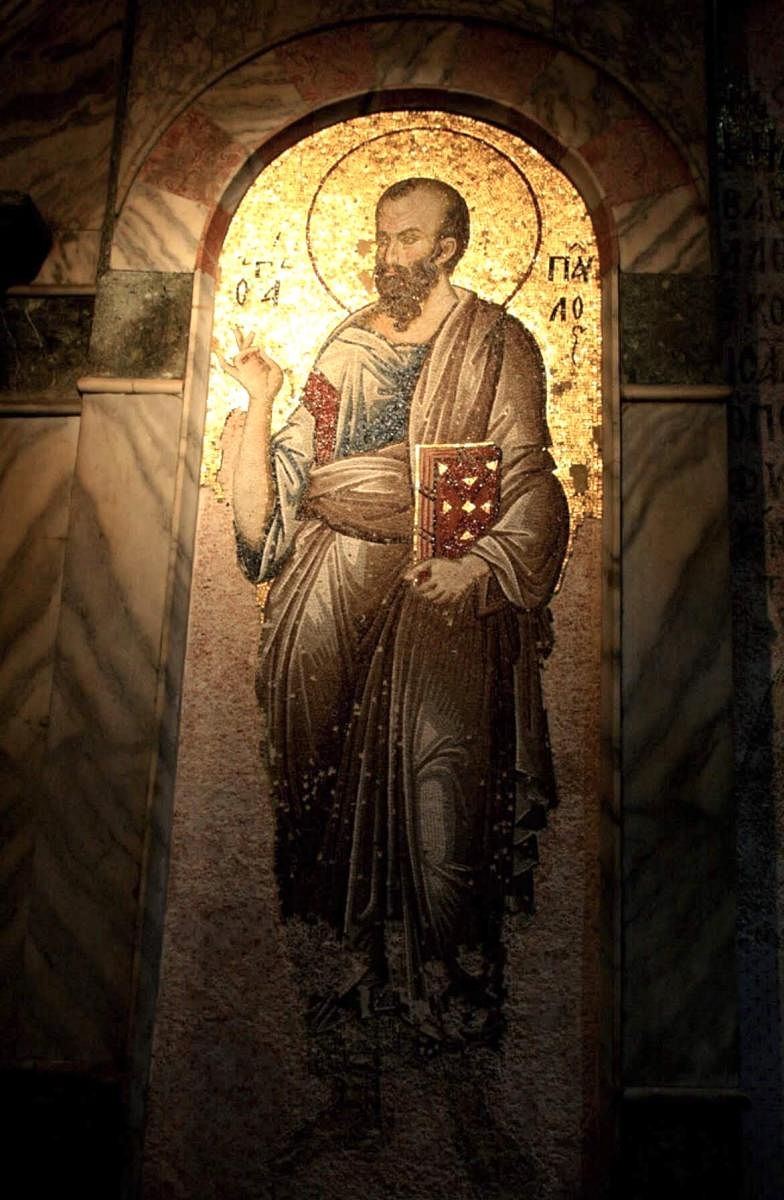
It was an Ottoman Mosque once but started life as a Byzantine Greek Orthodox Church. Last week, the Government of Turkey declared the Chora Museum to be a mosque again. When we visited it a couple of years ago, it was a museum — a remarkable one. Kariye Camii or the Chora is a repository of one of the finest collections of Byzantine mosaics left in the world today.
Built in 4 CE as a necropolis for martyrs and expanded into a Holy Church in the 11th century, the shrine suffered great devastation during the Crusades. It owed its resurrection, after two centuries, to the piety of one man: Theodore Metochites (1270 -1332 ) a statesman, patron of arts and the Grand Logothete of Byzantium (personal advisor to the emperor).
Metochites lavished his wealth on renovating the Chora church, commissioning brilliant mosaics and murals for the interiors. These rank among the best of what is called the Paleologan Renaissance. After Constantinople fell to the Ottomans, the church was converted into a mosque and the magnificent frescos and mosaics were covered over with thick plaster and wooden shutters. The artistic glory of this little church/ mosque would have remained obscured, had not two American organisations, The Byzantine Institute of America and Dumbarton Oaks Center for Byzantine Studies, offered to renovate the Chora’s artwork in 1948. The then Turkish government supported the plan and secularised the mosque.
Restoring the artwork from the shrouds of careless plaster was long painstaking work. But it paid off. When the monument was reopened as the Chora Museum in
1958, the world was overawed. We could see why.
Entering the sombre looking building, we were rendered speechless by the sight of the interiors. The high walls and pillars were an explosion of coloured marble — white, russet, black, yellow, with amber onyx and purple porphyry. Above them were The Murals, from the mature phase of Byzantine art. The figures in flowing robes showed extraordinary energy of movement and vivacity, a kind of dynamism not seen in older art.
Many narratives illustrated there were difficult for us to decipher without help from a guide because the stories were from the Apocryphal Gospels, not commonly recounted. The true treasures of the Chora are the Mosaics, verily jewels cladding the walls. The art of mosaic making is very ancient, but it was during the Byzantine times that it took off in a big way.
Mosaics are made of innumerable, small tiles called Tesserae, cut from coloured stone, seashells, gems and glass. The biggest triumph of Byzantine art was the
perfection achieved in making the Gold Tesserae.
These were made by layering a very thin gold foil on a sheet of glass, covering it with finely powdered glass and firing it. The cooled and hardened sandwich, cut into cubes, retained the lustre and brilliance for ages.
Tessarae were embedded on a thick layer of a paste made of lime and brick powder, while the base wall was still wet. The mosaics undulated according to the curving of the walls, adding a 3D effect to the icons created. For this reason, no mosaic looks the same at all times.
The effects vary according to the kind of light that falls on them and, also, the position of the viewer. While coloured tiles enliven the design, it is the gold tile that provides the dramatic effects required to elevate religious art. Only faith could have guided the hands of the unknown artisans to create such wonders on the walls and ceilings of the Chora.
The world is fortunate that at least some parts have survived the vagaries of time and historical misfortunes.